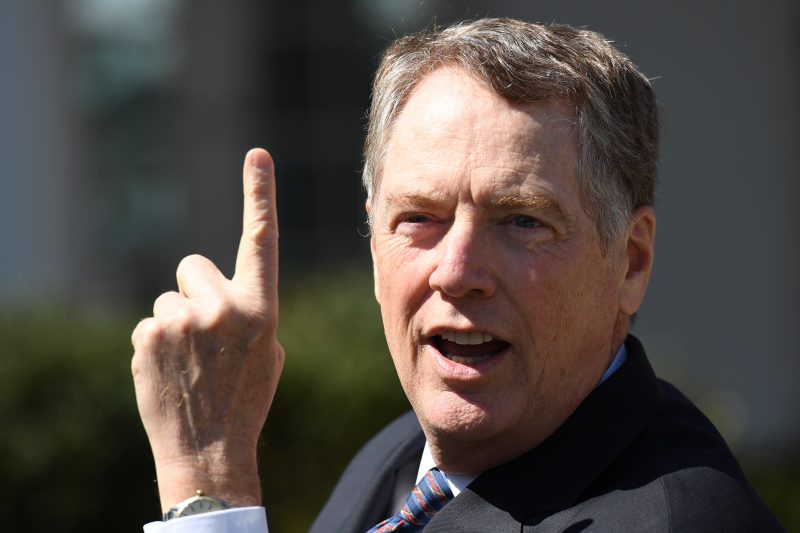USTR Lighthizer: Trump’s tough trade negotiator
US Trade Representative Robert Lighthizer speaks in March 2019 while awaiting a news conference by President Donald Trump and President of Brazil Jair Bolsonaro (Jim WATSON)
Washington (AFP) – He stays out of the limelight but shares President Donald Trump’s mistrust of China and the threat it poses to US economic power.
In his office across the street from the White House complex, US Trade Representative Robert Lighthizer will lead a key round of talks with Chinese negotiators on Thursday and Friday to try to salvage a deal to resolve a year-long dispute between the economic superpowers.
In the talks with China, the objectives are clear: to force the Asian giant to put an end to trade policies the US deems “unfair,” especially the theft or forced transfer of American technology, and state subsidies for industry.
Trump last year tapped the 71-year-old Lighthizer to lead the charge to force Beijing to change its trade policies with perhaps more at stake for the global economy than the effort to revamp the North American Free Trade Agreement.
Trump previously entrusted that mission to Commerce Secretary Wilbur Ross and Treasury Secretary Steven Mnuchin. Like those officials, Lighthizer is a full member of the president’s “cabinet” of ministers, and represents Washington in the World Organization Trade (WTO).
Lighthizer is a veteran trade negotiator, having served as deputy USTR under Republican President Ronald Reagan in the 1980s, and dealt with Japan, the trade power at the time.
Like Trump, Lighthizer believes free trade cannot be unfettered and must be reciprocal.
The new round of talks are critical, since Trump has decided to ratchet up punitive tariffs on $200 billion Chinese goods imported into the United States, more than doubling them to 25 percent as of May 10.
“Technology is the most important advantage that Americans have economically,” Lighthizer said in a rare television interview in December.
“We will protect that technology and get additional market access from China. If that can be done the president wants us to do it. If not we’ll have tariffs.”
– Promises and action –
Lighthizer will not be satisfied with promises. He wants actions.
Unlike Trump who revels the spotlight, Lighthizer keeps a low profile.
During negotiations with Canada and Mexico his appearances were rare, his speeches parsimonious, his media statements distilled.
In testimony before Congress, his responses are measured and he makes it a point of honor not to expose in public what is happening behind the scenes.
But he was on the receiving end of a withering public attack from Trump in the Oval office in February — in the presence of China’s Vice Premier Liu He and a bevy of reporters — when the president sharply corrected him on the terminology used to describe an agreement with Beijing.
But the USTR website describes Lighthizer as “a well-known advocate for the type of ‘America First’ trade policies supported by President Trump.”
Lighthizer comes from an affluent family in Ashtabula, Ohio an important port on Lake Erie. It was used for coal and ore transport at the end of the 19th century, and the town’s decline contributed to his skepticism about globalization and its drawbacks, according to relatives cited by The New York Times.
Prior to being named US Trade Representative in May 2017, Lighthizer, a father of two, was a partner in the powerhouse law firm Skadden Arps where he was a specialist in international trade law for more than 30 years.
He has an imposing stature, piercing gray-blue eyes and is described as equally “grumpy” in private as in public.
“He’s very particular. Bombastic at times,” said an official close to the US-Canada-Mexico talks. But he is “also charming, with a great sense of humor” and “tremendously respected for his strong intellect.”
Like many of the Washington elite, Lighthizer attended Georgetown University both as an undergraduate and for law school.
Disclaimer: Validity of the above story is for 7 Days from original date of publishing. Source: AFP.


